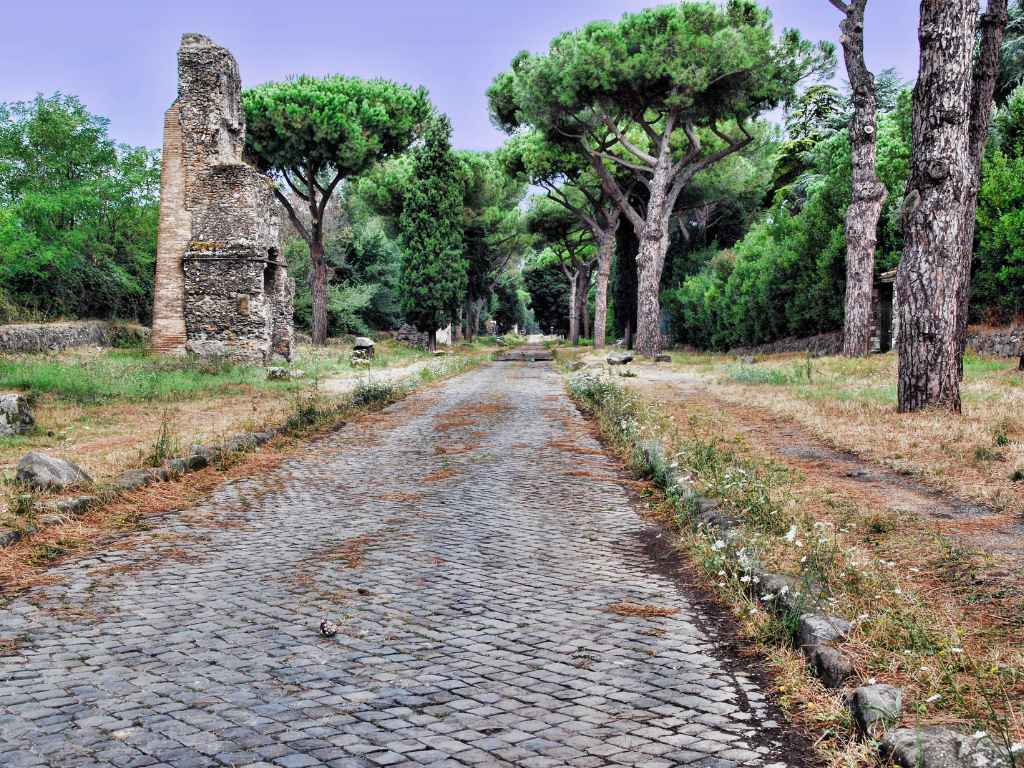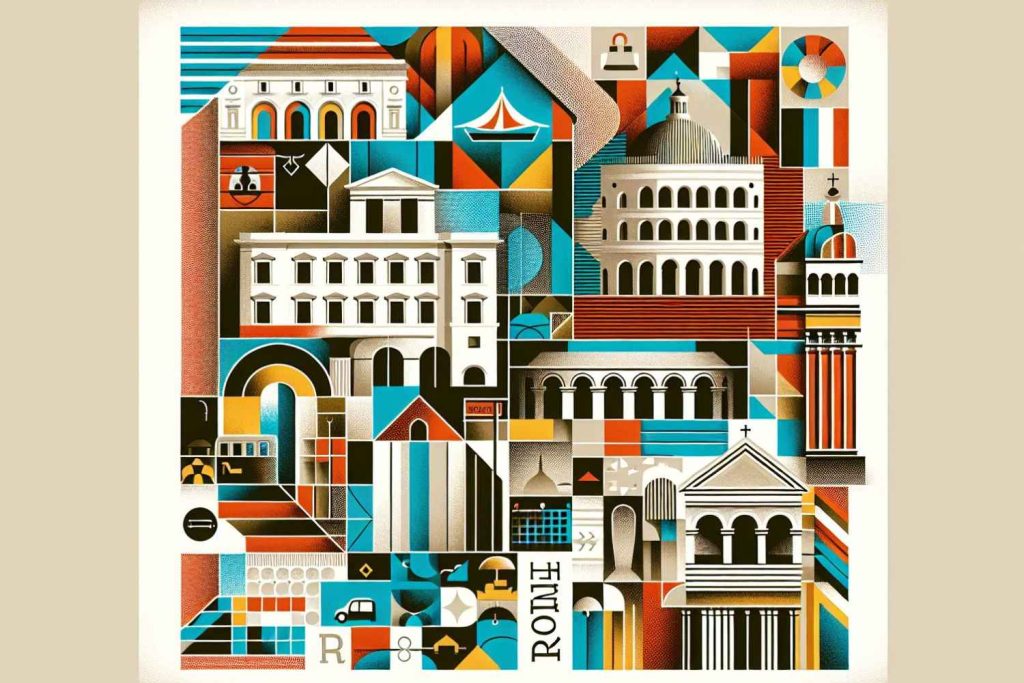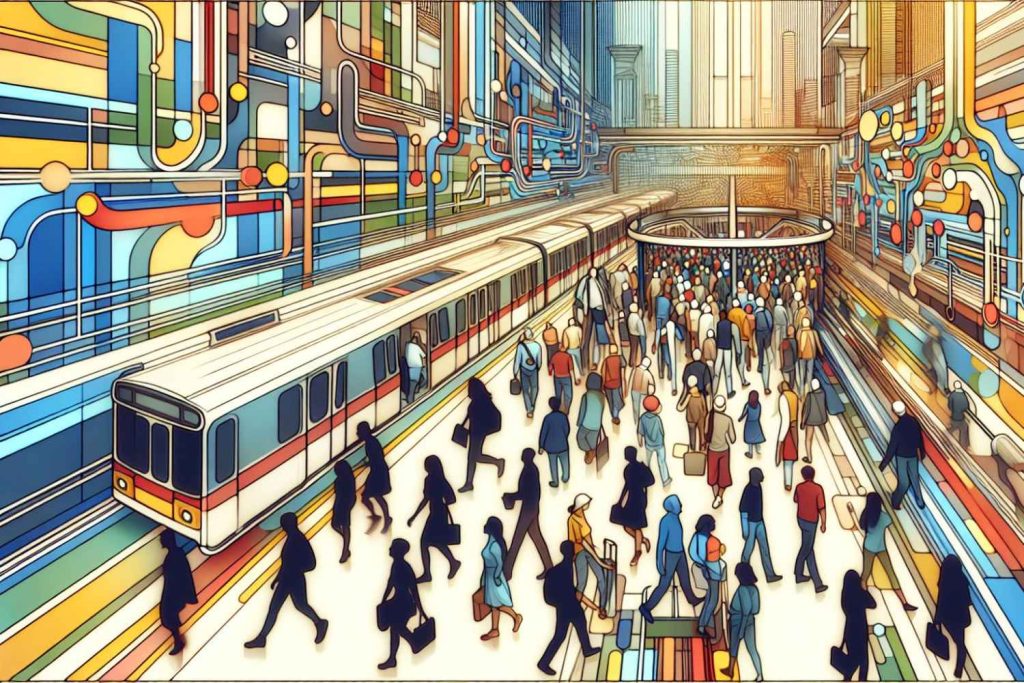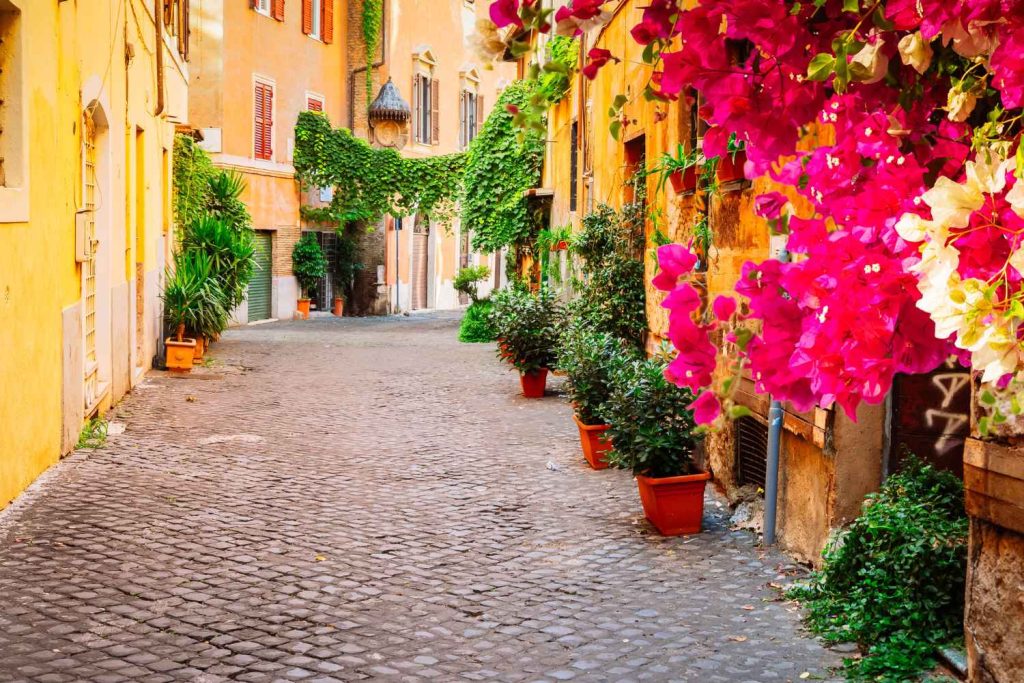Rome, the Eternal City, boasts an abundance of historical treasures that transport you to the heart of ancient civilization. Among these, the Appian Way, or “Via Appia Antica,” stands out as a remarkable testament to Roman engineering and culture.
This ancient road, dating back to 312 BC, is a historical wonder that invites modern travellers to step back in time, connecting with the past in an unparalleled way.
The Historical Significance
The Appian Way, also known as the “Queen of Roads,” played a pivotal role in the expansion of the Roman Empire. Commissioned by the Roman censor Appius Claudius Caecus, it was the first long road specifically designed for military use. This 350-mile marvel stretched from Rome to the southern regions of Italy and was essential for the Roman army’s rapid movement. Over time, it transformed into a vital trade route connecting Rome to its provinces, facilitating the exchange of goods, ideas, and cultures.
Wandering along the Appian Way today, you’ll witness numerous historical remnants. One of the most iconic is the Tomb of Cecilia Metella, a striking mausoleum adorned with friezes and sculptures. Nearby, the Circus of Maxentius awaits, a remarkably well-preserved example of an ancient Roman circus that once hosted chariot races. The Appian Way’s historical significance is not limited to its architectural marvels; it’s also lined with countless tombs and catacombs, offering a unique glimpse into Roman burial customs.
The Scenic Beauty
As you embark on your journey along the Appian Way, you’ll be captivated by the stunning natural landscapes that surround you. Tall cypress trees line the road, casting long shadows on the ancient cobblestones. The road’s linear design is not just practical but also visually pleasing, drawing your eye toward the distant horizon.
Several miles down the road, you’ll encounter the Appian Way Regional Park, a tranquil oasis that offers a sharp contrast to the bustling city of Rome. This expansive green space is perfect for leisurely walks or bike rides, providing ample opportunities to relax and soak in the Italian countryside. The park is also home to the Capo di Bove, a well-preserved villa from the Roman era, which is a testament to the luxurious lifestyles of the ancient Romans.
Exploring the Catacombs and Tombs
The Appian Way is synonymous with catacombs, and there’s no better place to explore these fascinating underground passageways than here. The Catacombs of San Callisto, San Sebastiano, and Domitilla are among the most renowned. These catacombs were used for burials and as early Christian places of worship, providing valuable insights into the religious and social life of ancient Rome.
The Catacombs of San Callisto, in particular, are of great historical importance as they house the graves of numerous early Christian martyrs. Their walls are adorned with intricate frescoes and epitaphs, revealing the profound faith and resilience of these early Christians. Visiting these catacombs is like stepping into a time machine, giving you an eerie, yet awe-inspiring sense of the past.
A journey along the Appian Way is an exploration of history, culture, and natural beauty. This ancient road tells a captivating story of Rome’s rise and transformation, making it a must-visit destination for travellers seeking a deep connection with the past. As you walk in the footsteps of Roman legions and early Christians, you’ll be transported to a world where history comes alive, creating a truly unforgettable experience.
Culinary Delights along the Appian Way
After immersing yourself in history and nature, it’s time to indulge in the culinary delights that the Appian Way and its surrounding areas have to offer. Along the road, you’ll find quaint trattorias and local eateries serving authentic Italian dishes that will tantalise your taste buds. Here are a few culinary gems to explore:
Trattoria Quo Vadis: Located near the Tomb of Cecilia Metella, this charming restaurant offers a perfect mix of traditional Roman cuisine and a relaxing atmosphere. Savour classic dishes like Cacio e Pepe and Amatriciana, accompanied by a glass of local wine. The cosy courtyard is an ideal place to enjoy your meal and soak in the serene surroundings.
Antica Hostaria Appia Antica: Nestled in a picturesque villa, this restaurant boasts an enchanting ambiance that complements its exquisite cuisine. Their menu features a variety of Roman and Italian specialties, with a focus on locally-sourced ingredients. Be sure to try their homemade pasta and the delicious tiramisu for a sweet finale.
Tor Fiscale: Just a short walk from the Appian Way, Tor Fiscale is a family-run trattoria known for its authentic Roman flavours. Their menu includes delightful dishes like Saltimbocca alla Romana and a selection of mouth watering pizzas. Enjoy your meal in the cosy interior or on the charming outdoor terrace.
Practical Tips for Exploring the Appian Way
- The Appian Way is easily accessible from the city centre by public transportation, with several bus lines connecting it to various parts of Rome. Alternatively, you can rent a bike to explore the road at your own pace.
- Wear comfortable walking shoes and bring sunscreen, a hat, and water, especially during the warm summer months. The cobblestones can be uneven in places, so good footwear is essential.
- If you plan to visit the catacombs, check their opening hours and ticket information in advance, as they may vary.
- To fully appreciate the historical significance and natural beauty of the Appian Way, allow yourself a full day or even a weekend to explore at a leisurely pace.
- Be respectful of the historical sites and the natural environment. Avoid littering and follow any guidelines provided by local authorities.
The Appian Way in Rome is a remarkable journey through time, offering a unique blend of history, natural beauty, and culinary delights. Whether you’re a history enthusiast, a nature lover, or a foodie, this ancient road has something to offer every traveller. By immersing yourself in its stories and flavours, you’ll leave with a profound appreciation for the rich tapestry of Rome’s past and its enduring charm in the present.
The Appian Way: Beyond the Beaten Path
While many visitors to Rome focus on the well-known sections of the Appian Way, there are hidden gems and less-explored areas along this ancient road that are worth discovering. These off-the-beaten-path destinations provide a more intimate and authentic experience.
Mausoleo di Monte del Grano: Located a bit further down the road, this relatively lesser-known mausoleum offers a quieter and more contemplative experience. It is an excellent spot for photography and a moment of solitude. Its well-preserved architecture and peaceful surroundings make it a hidden historical treasure.
Tomb of Priscilla: This catacomb is named after a prominent Roman Christian who played a crucial role in the early Christian community. It is less crowded than some of the more famous catacombs, offering a serene and insightful journey into early Christian history. The frescoes and inscriptions provide a fascinating glimpse into the lives of early Christians.
Explore the Aqueduct Park: Just a short distance from the Appian Way, the Parco degli Acquedotti, or Aqueduct Park, is a green oasis that offers a stark contrast to the historical road. Here, you can wander amidst the towering ancient Roman aqueducts that once supplied water to the city. The park is a favourite spot for locals to relax, have a picnic, and enjoy the natural beauty.
Travelling Beyond the Appian Way
While the Appian Way itself is a captivating journey, it’s worth considering extending your exploration to nearby attractions that enrich your Roman experience. A few notable places nearby include:
Villa dei Quintili: This impressive Roman villa, just a short drive from the Appian Way, once belonged to the wealthy Quintili brothers. It’s a prime example of Roman opulence, featuring well-preserved ruins and beautiful mosaics. The villa also offers panoramic views of the surrounding countryside.
Ostia Antica: If you’re a history enthusiast, a visit to Ostia Antica is a must. This ancient Roman port city, often referred to as the “Pompeii of Rome,” offers a remarkable glimpse into daily life during the height of the Roman Empire. Its well-preserved buildings, streets, and frescoes provide an immersive experience into the past.
Appian Way: A Journey Through Time and Beauty
The Appian Way is not merely a road; it’s a gateway to the past, a connection to nature, and an exploration of culture and cuisine. Whether you follow the well-trodden path or venture off into lesser-known corners, the Appian Way reveals a diverse range of experiences that will leave you with a deep appreciation for the rich history and enduring beauty of Rome.
As you conclude your journey through time and beauty along the Appian Way, you’ll find that this remarkable road is more than a destination; it’s a transformative experience that stays with you long after you’ve left its ancient cobblestones behind. With each step you take, you’ll find yourself bridging the gap between the past and the present, forging your own timeless connection to the Eternal City.
More articles you might like...
You can find more great Rome content in the following categories;
All about Vatican City Commonly Asked Rome Questions Rome Accommodation Rome Food and Drink Rome History and Culture Rome Neighbourhoods Rome Tours and Must-See Attractions Rome's Top Tours





